Do you know what the pink ribbon symbolizes ? We’re sure you might be aware of it! The pink ribbon is dedicated globally to raise awareness among women about Breast Cancer, and this campaign dates back to the nineties. The Pinktober Month- October, is celebrated worldwide in order to help women fight off breast cancer by spreading information about it. Whether they’re from low-resource areas or well-developed places, the aim is to advance the treatment protocols and bring a decline in death rate. It’s preterm detection and early stage diagnosis can help a great deal to eradicate it. As breast cancer is found to be the second most deadliest cancer in the world!
We’ve outlined below some important questions that you’ll get to read in this blog.
- What is breast cancer?
- What are the symptoms of Breast Cancer?
- What Are The Risk Factors in Breast Cancer that you must be aware of?
- Can Breast Cancer be prevented?
- What Are Some Of The Treatment Protocols That Are Followed to Fight Breast Cancer?
- Pharmacist’s advice
What is breast cancer?
Breast cancer be identified as a disease that starts as mutating cancerous cells in any of the breasts that keep dividing and form tumors. If kept unchecked, or diagnosed late, there are chances of them spreading throughout the body causing fatalities. It can start growing either in milk duct or lobules and be invasive or non-invasive, invasive ones spreading through lymph nodes and probably reach other organs too.
Symptoms of breast cancer
Breast cancer can be identified by few visible symptoms that one can easily take notice of. Conditions like having nipple discharge, lump in any surrounding area of the breast (can be even in underarms), irregular size or shape of the breast, scaly or peel like skin around the areola, inversion or flattening of nipple and color difference of your breast, can be some signs that indicate the presence of this deadly disease.
Risks factors of breast cancer
There are some crucial red flags which you should look for if you’re threatened about struggling with breast cancer at any point of your life.
We’ve outlined below some of the major risk factors that you must know:
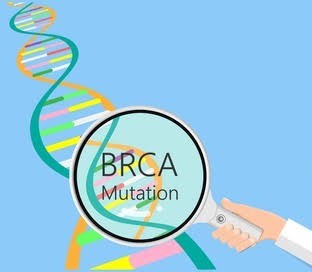
Family Genetics
If any of your parents or siblings might have had breast cancer , chances are high that you might get it too. Certain mutations in DNA , particularly on BRCA1 and BRCA2 can be passed on genetically, making you prone to increased risk of having cancer. However the good thing is it’s not always necessary to be so.
Age factor & Gender role
Women most likely , above the age of 50 , are at high risk of getting breast cancer. Although the gender doesn’t restrict cancer invading the men’s breast as well, but comparatively the ratio is lower than females.


Periods & Pregnancy
Planning your pregnancy after 30s can be a danger signal as chances of developing breast cancer gets higher. Similarly if a girl starts her periods early than teenage year 13 or a woman gets her menopause delayed after being 55 years , chances for her getting this cancer increases too.
Race & Ethnicity
Men and Women of black originity have higher chances of death from breast cancer compared with white women or men, however the incidence rate is lower in the former group. A specific tribe of Jewish women have higher incidence of getting this cancer because of BRCA mutations
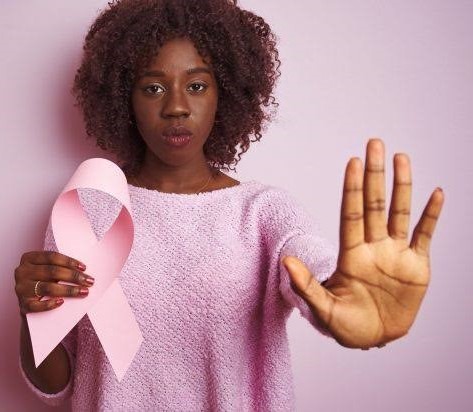
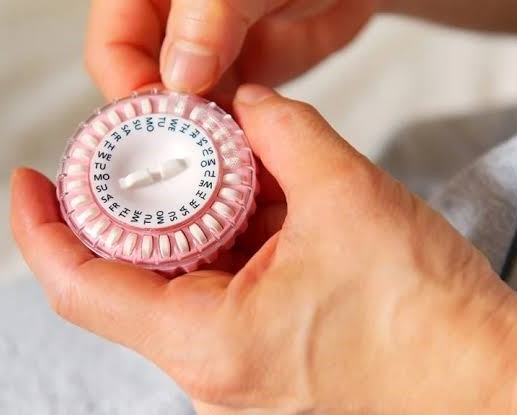
Use of Hormone Replacement Therapy
HRT (Hormone Replacement Therapy) adopted by women to get rid of menopausal symptoms , have many side effects alongside a theoretically proved increased chances for getting breast cancer.
However, there are some factors which can be reversed and the risk is eliminated those are modifiable risk factors for breast cancer. And some of them cannot be changed, which are non-modifiable risk factors. Below is the pictorial representation of both types.
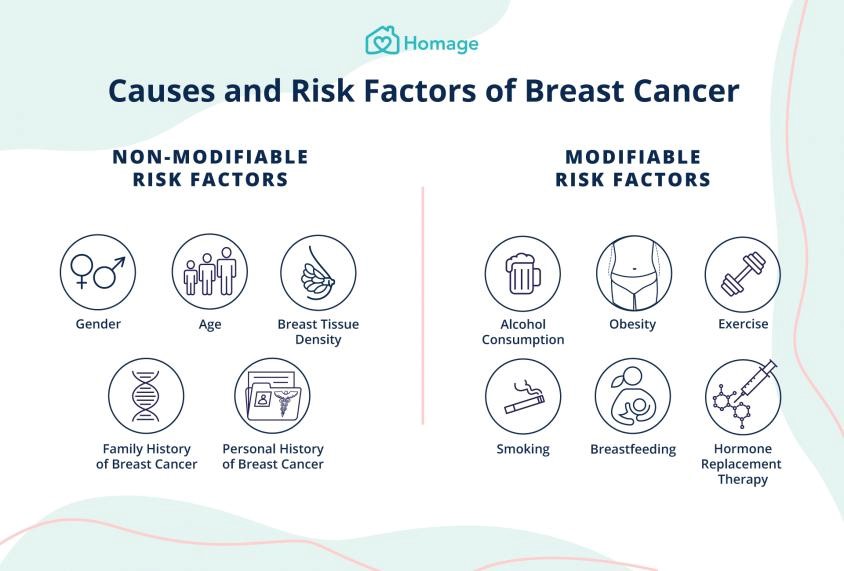
Prevention of breast cancer
As we discussed above there are some modifiable factors altering which can greatly reduce your chances of getting the disease. If you take care about your lifestyle choices such as limiting or avoiding the use of alcohol, practicing exercise and eating healthy diet to avoid obesity , cutting down on doses of your HRT, breastfeeding your baby instead of relying on other choices, and avoiding smoking can all be helpful in this regard.
Apart from this regular screening and self examination if having a doubt of observing lump or any other breast changes can be source of prevention too!
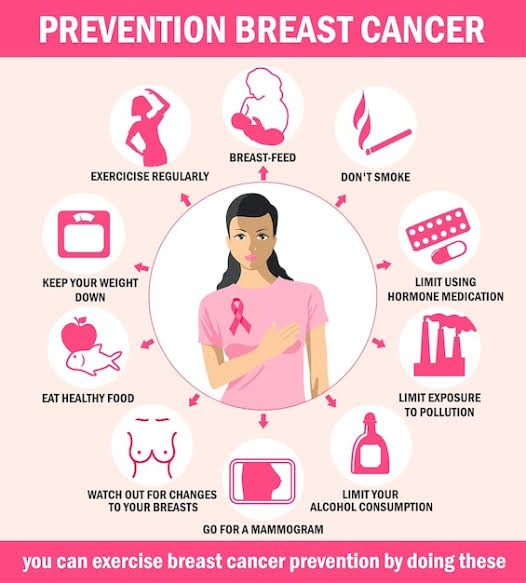
Treatment of breast cancer
Thinking about this deadly disease might give you goosebumps, God forbids, if you have been diagnosed. It might feel like getting a death sentence , no matter what your age or conditions are. However it’s partially true, breast cancer is not totally incurable. Specially if diagnosed early, there are chances of being treated with good survival rate.
Treatment protocols that are adopted are either based on systemic approach or local approach. Local Therapy includes the patient undergoing surgery or radiotherapy which is particularly directed towards the cancer site only. Systemic Therapy includes the patient being given medications that might be chemotherapeutic , hormonal therapy or targeted therapy, which acts to kill the cancer cells all around the body meanwhile killing some of the normal cells too.

Pharmacist’s advice
Apart from just noticing the prominent symptoms, you must also take steps like:
- Getting screened through a mammogram if you find any abnormal pain or lump in your breast.
- Learn about breast self-examination, that you can easily carry out yourself. We’ve attached below some visuals for your assistance.
- Resist the misconceptions and socio-cultural barriers and refer to a healthcare practitioner if you notice any abnormalities. There are some myths that are widespread among people that should be busted and not believed upon.
As a pharmacist, we are committed to supporting women’s health and raising awareness about breast cancer. Early detection and prevention are keys to fight against this disease.
As healthcare providers, we encourage regular screenings, healthy lifestyle choices, and open communication with your doctor/pharmacist. Together, we can make a difference. Remember, your health is your most valuable asset—take steps today to protect it.
If you have any questions or need guidance, don’t hesitate to visit or reach out to us for support.
Feel free to share your thoughts about this blog in the comment section below.
if there’s a specific topic you’d like us to cover in our next blog or have any suggestions, you can share your feedback with us. We’ll be happy to provide content that meets your needs.
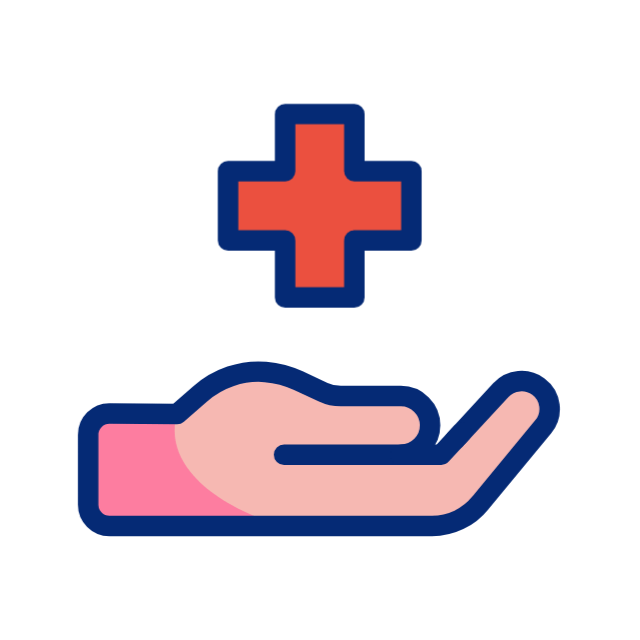
Leave a Reply